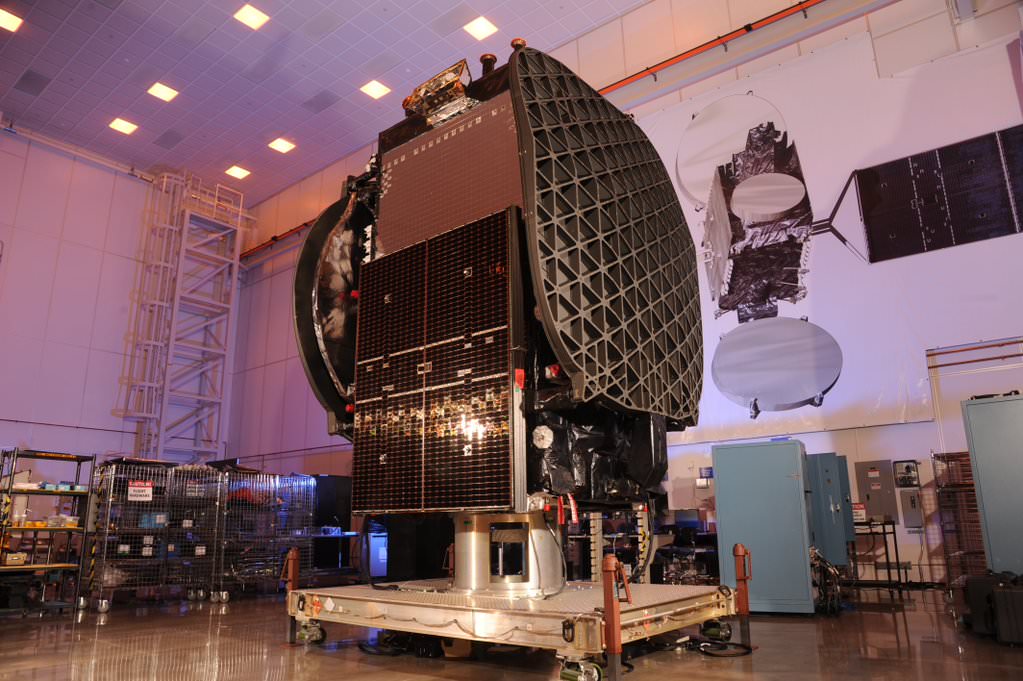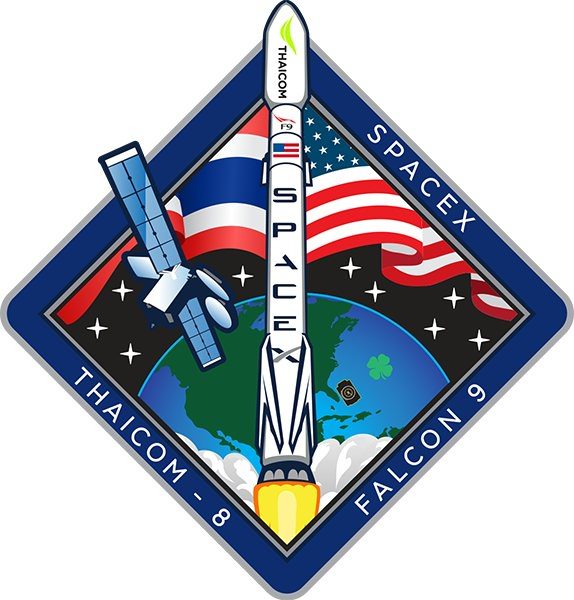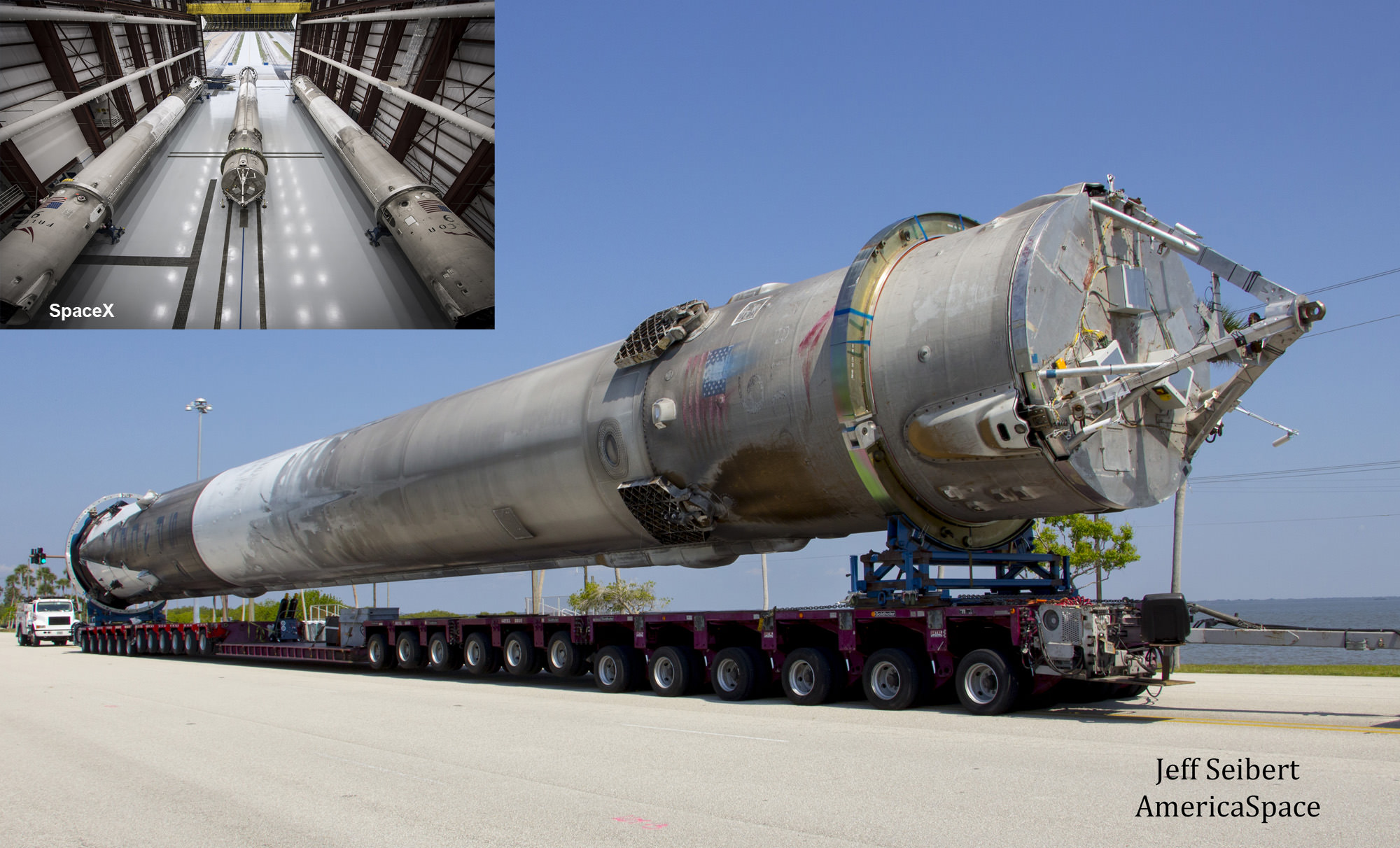
CAPE CANAVERAL AIR FORCE STATION, Fla. – Just three weeks after SpaceX’s last launch from their Florida launch base, the growing and influential aerospace firm is deep into commencing their next space spectacular – targeting this Thursday, May 26, for launch of a Thai comsat followed moments later by a sea landing attempt of the booster on a tough trajectory.
SpaceX is slated to launch the Thaicom-8 telecommunications satellite atop an upgraded version of the SpaceX Falcon 9 on Thursday at 5:40 p.m. EDT from Space Launch Complex-40 at Cape Canaveral Air Force Station in Florida.
SpaceX is rapidly picking up the pace of rocket launches for their wide ranging base of commercial, government and military customers that is continuously expanding and reaping contracts and profits for the Hawthorne, Calif. based company.
This commercial mission involves lofting Thaicom-8 to a Geostationary Transfer Orbit (GTO) for Thaicom PLC, a leading satellite operator in Asia.
This also counts as the second straight GTO launch and the second straight attempt to land a rocket on a sea based platform from the highly demanding GTO launch trajectory.
Will this mission make for 3 successful Falcon 9 1st stage booster landings in a row? Tune in and find out !!
Engineers have a two-hour window to launch the Falcon 9 and deliver Thaicom to orbit.
Thaicom-8 was built by aerospace competitor Orbital ATK, based in Dulles, VA. It will support Thailand’s growing broadcast industry and will provide broadcast and data services to customers in South Asia, Southeast Asia and Africa.
The Falcon 9 launch is the 5th this year for SpaceX.
You can watch the launch live via a special live webcast from SpaceX.
The SpaceX webcast will be available starting at about 20 minutes before liftoff, at approximately 5:20 a.m. EDT at SpaceX.com/webcast
The two stage Falcon 9 rocket has a two-hour launch window that extends until Thursday, May 26 at 7:40 p.m. EDT.

The path to liftoff was cleared late last night the company completed the customary pre-launch static fire test of the rocket’s first stage upgraded Merlin 1D engines for several seconds at pad 40.
The nine engines on the 229 foot tall Falcon 9 rocket generate approximately 1.5 million pounds of thrust.
Engineers monitored the test and after analyzing results declared the Falcon 9 was fit to launch Thursday afternoon.
The weather currently looks very good. Air Force meteorologists are predicting a 90 percent chance of favorable weather conditions at launch time Thursday morning with a minor concern for ground winds.
The backup launch opportunity is Friday, May 27. The weather outlooks is somewhat less promising at a 70 percent chance of favorable conditions.
After the Falcon 9 rocket delivers the satellite into its targeted geosynchronous transfer orbit it will enter a 30-day testing phase, says Orbital ATK.
Following in-orbit activation and after reaching its final orbital slot, Orbital ATK will then turn over control of the satellite to Thaicom to begin normal operations.
THAICOM 8’s orbital location will be positioned at 78.5 degrees east longitude and the satellite is designed to operate for more than 15 years.
Thaicom-8 is a Ku-band satellite that offers 24 active transponders that will deliver broadcast and data services to customers in Thailand, Southeast Asia, India and Africa.
Thaicom-8 has a mass of approximately 6,800 pounds (3,100 kilograms). It is based on Orbital ATK’s flight-proven GEOStar-2TM platform.
“We built and delivered this high-quality communications satellite for Thaicom PLC two months ahead of schedule, demonstrating our ability to manufacture reliable, affordable and innovative products that exceed expectations for our customer,” said Amer Khouri, Vice President of the Commercial Satellite Business at Orbital ATK.
“As one of Asia’s leading satellite operators, we are grateful for Thaicom’s continued confidence and look forward to more successful partnerships in the future.”
Thaicom-8 will join Thaicom-6 already in orbit. It was also designed, manufactured, integrated and tested by Orbital ATK. at the firm’s state-of-the-art satellite manufacturing facility in Dulles, Virginia.
Thaicom PLC commissioned Thaicom-8 in 2014, shortly after SpaceX launched the THAICOM 6 satellite into orbit in January 2014.

The secondary test objective of SpaceX is to land the Falcon 9 rockets first stage on an ocean going barge several hundred miles offshore in the Atlantic Ocean.
The Autonomous Spaceport Drone Ship (ASDS) barge is named “Of Course I Still Love You.”
However with this mission’s GTO destination, the first stage will be subject to extreme velocities and re-entry heating and a successful landing will be difficult.
Having said that and despite those hurdles, the last GTO mission landing attempt did succeed brilliantly following the May 6 JCSAT-14 launch.
Tune in to the SpaceX webcast Thursday afternoon to catch all the exciting action !!

Watch for Ken’s on site reports direct from Cape Canaveral and the SpaceX launch pad.
Stay tuned here for Ken’s continuing Earth and planetary science and human spaceflight news.
………….
Learn more about SpaceX Falcon 9 rocket, ULA Atlas rocket, Orbital ATK Cygnus, ISS, Boeing, Space Taxis, Mars rovers, Orion, SLS, Antares, NASA missions and more at Ken’s upcoming outreach events:
May 25/26: “SpaceX, ULA, SLS, Orion, Commercial crew, Curiosity explores Mars, Pluto and more,” Kennedy Space Center Quality Inn, Titusville, FL, evenings
Jun 2 to 5: “ULA, NRO, SpaceX, SLS, Orion, Commercial crew, Curiosity explores Mars, Pluto and more,” Kennedy Space Center Quality Inn, Titusville, FL, evenings
